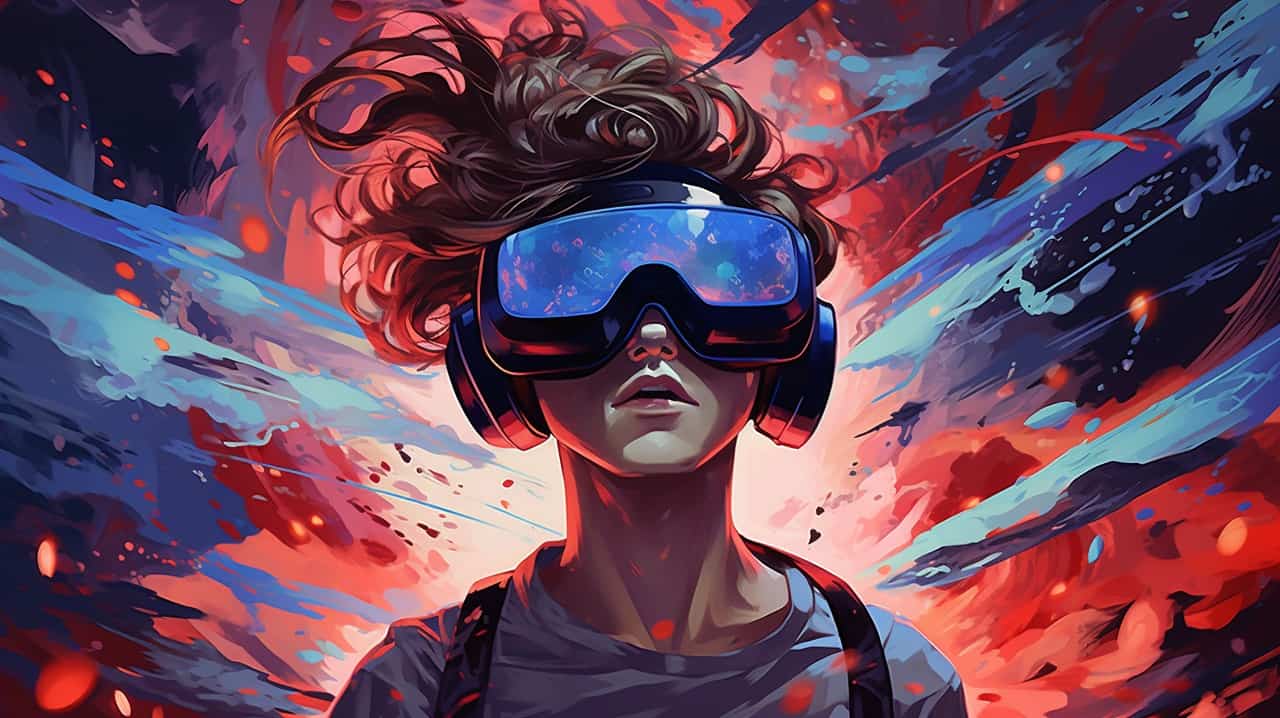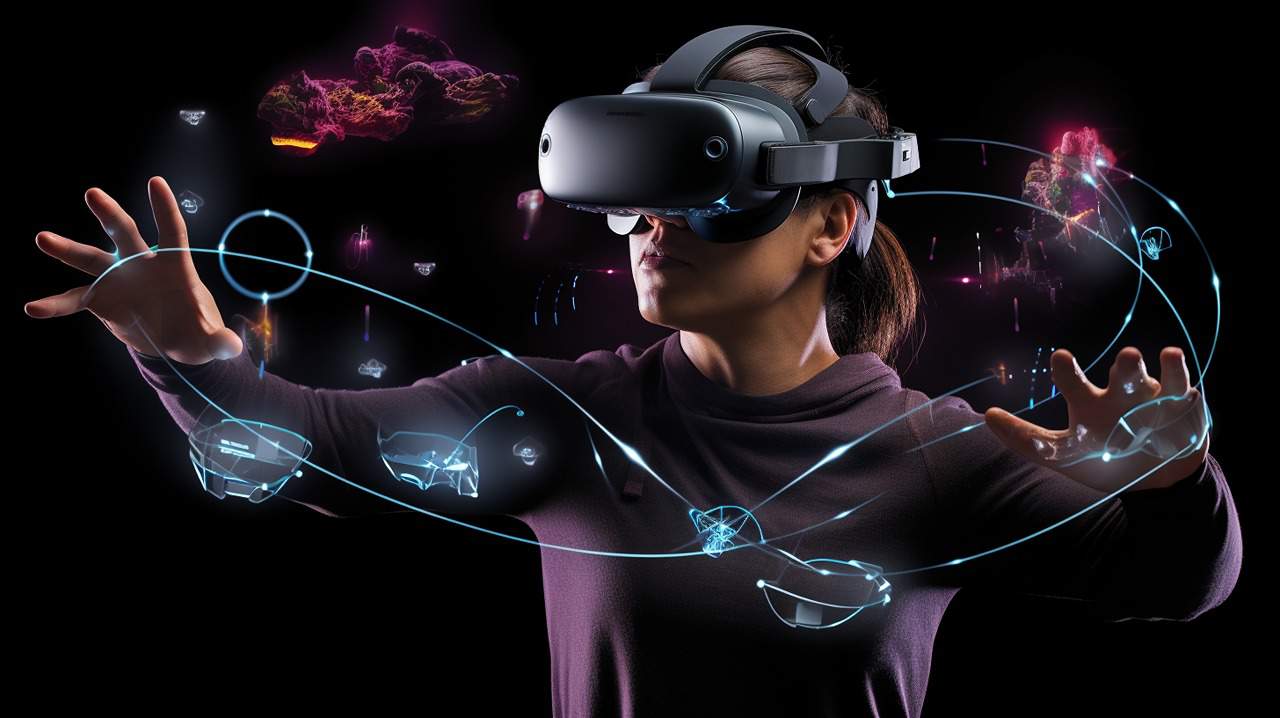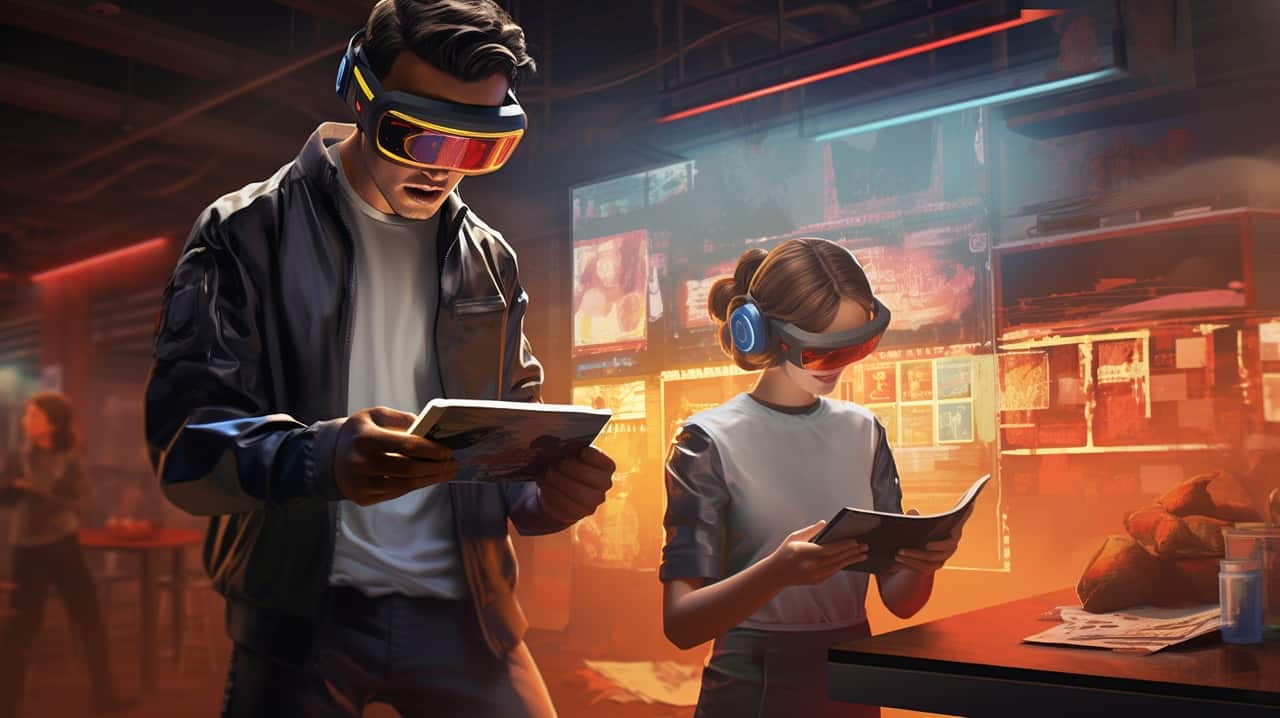Dealing with the annoying sensation of nausea and dizziness while indulging in video games? We understand that gaming-induced motion sickness can put a damper on your enjoyment.
In this comprehensive guide, we aim to delve into the reasons behind this phenomenon and suggest effective strategies to counter it.
By tweaking game settings and optimizing your gaming environment, we aim to help you mitigate motion sickness and reclaim comfortable, enjoyable gaming sessions.
So, gear up to reclaim your gaming sessions and bid farewell to discomfort!
‘Take the reins of your gaming experience, and say no to motion sickness!’
Key Takeaways
Motion sickness in video games occurs when there is a disconnect between visual movement in the game and a lack of physical movement detected by the inner ear.
First-person series games are more likely to cause motion sickness due to their immersive and realistic movement.
Adjusting game settings such as sensitivity, point of view, camera movement speed, and head/gun bobbing can reduce motion sickness symptoms.
Taking regular breaks, engaging in eye exercises, and avoiding extended periods of gameplay can prevent or alleviate motion sickness.
Table of Contents
Understanding Simulator Sickness: Origins and Theories

Do you sometimes feel nauseous while playing video games? This could be due to a phenomenon known as simulator sickness, and gaining an understanding of its roots and theories can be incredibly beneficial.
Simulator sickness, also referred to as simulation sickness, first became recognized as an issue for pilots with the introduction of stationary simulators. Historically, this issue was first noted in the 1950s when Bell Aircraft Corporation’s helicopter simulator exposed that a significant number of seasoned flight instructors were experiencing symptoms of simulator sickness.
Lots of people feel motion sickness while playing video games. Doctors even have a name for it: They call it simulator sickness because it was first noticed in people using driving or flying simulators. Doctors aren’t sure exactly why video games cause motion sickness.
https://kidshealth.org/en/teens/simulator-sickness.html
This leads us to the two primary theories that attempt to explain the occurrence of simulator sickness: the sensory conflict theory and the postural instability theory. “Sensory conflict theory posits that simulator sickness arises when there’s a mismatch between visual signs of self-movement and physical forces. On the other hand, postural instability theory proposes that new and unfamiliar motion cues can result in a loss of balance control, which is the precursor to simulator sickness,” says a leading expert on motion sickness.
Impact of Real and Simulated Experience

Let’s delve into the intriguing influence of genuine and replicated experiences on motion sickness, specifically in the realm of video gaming. It’s essential to examine the relationship between a pilot’s real-life expertise and the onset of simulator-induced queasiness. Research reveals that seasoned pilots, familiar with varied motion patterns during actual flights, might start feeling sick in a simulator.
The more extended the gaps between simulator training sessions, the higher the chances of ill-effects surfacing. Nonetheless, acclimatizing oneself to the simulator environment proves to be the most potent antidote to such maladies. Most people can comfortably adjust within a few rounds, although it’s noteworthy that these discomforting symptoms might resurface when individuals return to the former setup after getting used to a new simulator motion setting.
Here’s an easy-to-understand breakdown of the influence of real and simulated experiences on motion sickness:
| Real Experience Impact | Simulated Experience Impact |
|---|---|
| Skilled pilots can feel sick in simulators | Sickness can surge with prolonged training breaks |
| Acclimatization is the best remedy | Symptoms can recur when returning to the original setup |
Mastering the implications of authentic and replicated experiences is key to curbing motion sickness in video games. This holds especially true for virtual reality gaming, where the immersive quality can amplify the chances of experiencing symptoms like dizziness and nausea.
Simulator sickness is a syndrome similar to motion sickness, often experienced during simulator or another virtual reality (VR) exposure.
https://www.ncbi.nlm.nih.gov/pmc/articles/PMC6232264/
Understanding the Evaluation of Simulator Sickness

To get a precise gauge of simulator sickness, it’s vital to employ an internationally recognized assessment tool – the Simulator Sickness Questionnaire (SSQ). Notable for its reliability, the SSQ is a popular tool that assists in identifying and quantifying simulator sickness symptoms that individuals endure. It examines a range of symptoms like nausea, dizziness, and disorientation, both before and after the individual’s exposure to simulation environments.
Beyond the SSQ: Other Measures of Simulator Sickness
Apart from the SSQ, there are other techniques for evaluating simulator sickness, including physiological indicators like heart rate and skin conductance. The scientific community is also investigating the potential of specialized eyewear, such as motion sickness glasses or gaming glasses, as a way to alleviate some symptoms. Furthermore, technical aspects like frame rates and refresh rates can influence simulator sickness, with higher rates typically resulting in a more fluid and comfortable user experience.
Gaming Perspective: A Factor in Simulator Sickness?
Interestingly, a shift in gaming perspective might also affect the onset of simulator sickness. For instance, playing games from a third-person viewpoint could potentially lower the chances of experiencing simulator sickness as opposed to first-person games.
Understanding simulator sickness and its measurement is a complex process, but with the right tools and strategies, we can make significant strides in improving user comfort and overall experience in simulated environments.
Navigating Simulator Sickness and Its Safety Implications

Video gaming comes with its own set of challenges, one of which is the issue of simulator sickness, also known as cybersickness. This condition, often associated with motion sickness, manifests in various physical symptoms such as perspiration, headaches, and, in some severe cases, vomiting. The implications of simulator sickness aren’t only discomforting but also pose potential safety risks.
- Training Distractions: Simulator sickness could lead to pilots losing focus during their training sessions, thus posing a risk to safety.
- Adapting Unfavorable Actions: To avoid the symptoms of simulator sickness, pilots might resort to unproductive behaviors, which could potentially undermine safety.
- After-Training Consequences: The lingering effects of simulator sickness post-training could pose a safety risk if pilots operate vehicles or aircraft while still experiencing symptoms.
- Impediment to Performance: There’s a risk that simulator sickness might impact a pilot’s performance in an actual aircraft after training, raising safety concerns.
Managing simulator sickness is of paramount importance in ensuring that pilots can operate effectively and safely under real flight conditions. As such, it’s essential to address this issue head-on to maintain safety standards.
Thus, the journey through the virtual world of video games can be both exciting and challenging. But with the right attention to health and safety, this journey can be navigated successfully.
Addressing Motion Sickness in the Gaming World

Ever felt queasy during an intense gaming session? There’s no need to worry, as tweaking a few game settings can mitigate the unpleasant effects of motion sickness. Getting to grips with the root causes of gaming-induced motion sickness can guide you toward effective remedies. A prevalent explanation for this condition is the sensory conflict theory. This proposition implies that if visual indicators of self-movement don’t align with the stationary state perceived by your inner ear, it can trigger motion sickness.
To counteract this, altering the game’s sensitivity settings and point of view might be beneficial. Dialing down the speed of camera movements and the oscillation of the head or weapon in the game could have a significant impact. Moreover, resorting to acupressure wristbands or ginger-based products could provide additional relief from symptoms. Incorporating regular breaks, managing your gameplay strategically, and nurturing a cozy gaming ambiance are also crucial aspects to consider. By embracing these tactics, you can dive into your gaming adventures without the fear of feeling dizzy or nauseous.
| Game Parameters | Impact |
|---|---|
| Tweaking sensitivity settings | Diminishes motion sensitivity |
| Slowing down camera movement | Lessens disorientating visuals |
| Switching off head/weapon oscillation | Minimizes visual stimuli |
| Altering point of view | Offers a fresh perspective |
| Modifying screen settings | Eases eye fatigue |
As a wise gamer once said, “The key to a great gaming experience is not just in the game itself, but also in how you play it”.
Tackling Motion Sickness in Gaming Through Game Settings Management

Navigating the gaming world can sometimes be a roller-coaster ride, especially when motion sickness kicks in. The good news is that by tweaking certain game settings and managing your gameplay, you can significantly mitigate these discomforting symptoms.
Here’s how:
- ‘Lower the Speed, Raise the Comfort’: Try reducing the pace of your camera movements and the amount of head or weapon sway. By doing so, you can limit the severe visual triggers often responsible for motion sickness.
- ‘Genre Matters’: Consider exploring different types of games. For instance, third-person games or puzzles are usually less provocative of motion sickness symptoms.
- ‘Slow and Steady Wins the Race’: Begin your gaming journey with simpler games, gradually introducing more complex and immersive experiences as your tolerance develops.
- ‘Pause, Breathe, Resume’: Incorporate regular breaks into your gaming sessions. This allows your body time to recuperate and combats the stress response that often exacerbates motion sickness.
Remember, your susceptibility to motion sickness may differ from others, so it might take some experimentation to discover the best strategies for you.
As a bonus tip, consider trying out acupressure wristbands or other anti-motion sickness remedies for extra comfort.
In the words of a famous gamer, ‘The right settings can change the game. So, set it right, play it right.’
Influences of the Environment and Techniques to Combat Motion Sickness
To craft the perfect gaming scenario and minimize motion sickness, think about modifying your gaming atmosphere and adopting measures to combat motion sickness.
Focus on the illumination in your game zone. Excessive brightness or pulsating lights can intensify motion sickness. Choose softer and more stable lighting – LED lights are a good option as they’re less straining on the eyes.
Enhance airflow in the room by using fans, which will help avoid a stifling and uncomfortable environment.
Hydration is key, so keep a flask of chilled water close by for regular hydration during your gaming marathons.
Consider trying out anti-motion sickness eyewear such as Seetroen glasses or blue light glasses to help mitigate discomfort.
By making these simple yet effective changes to your environment and embracing anti-motion sickness techniques, you’re setting the stage for a better gaming experience and lessening the likelihood of motion sickness.
‘Craft your perfect gaming scenario, keep motion sickness at bay – play smart and stay comfortable!’
Frequently Asked Questions About Motion Sickness in Video Games
What Are Some Common Symptoms of Motion Sickness in Gaming?
Some common symptoms of motion sickness in gaming include dizziness, nausea, sweating, headaches, and vomiting. Adjusting game settings, taking breaks, and managing gameplay can help alleviate these symptoms.
Are Certain Game Genres More Likely to Cause Motion Sickness Than Others?
Certain game genres, like first-person series games, are more likely to cause motion sickness due to their immersive and realistic movement. Adjusting game settings, taking breaks, and experimenting with different genres can help alleviate symptoms.
How Can Adjusting Game Settings Help Reduce Motion Sickness?
Adjusting game settings is key to reducing motion sickness. Lowering camera movement speed and head bobbing, changing sensitivity settings, and experimenting with different game genres can make a significant difference in alleviating symptoms.
Are There Any Over-The-Counter Medications or Remedies Specifically Designed for Motion Sickness in Gaming?
Yes, there are over-the-counter medications and remedies specifically designed for motion sickness. They can provide relief from symptoms like dizziness and nausea during gaming. It’s best to consult a healthcare professional for recommendations.
When Should Someone Seek Professional Help for Motion Sickness During Gaming?
If motion sickness during gaming persists or worsens despite adjusting game settings and taking breaks, it’s time to seek professional help. A healthcare professional can offer medications, therapies, and specialized glasses to manage motion sickness effectively.
